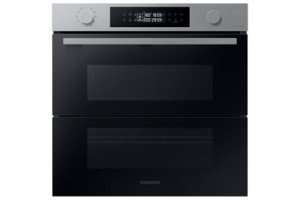10 Simple Ways To Figure Out The Built In Oven In Your Body.
The Ultimate Guide to Buying a Built-In Oven
In the realm of contemporary cooking appliances, built-in ovens stand apart for their seamless integration into kitchen cabinetry, visual appeal, and advanced cooking technologies. They supply a myriad of functions and a streamlined design, catering to both cooking lovers and daily cooks. Nevertheless, selecting the right built-in oven can be overwhelming offered the wide range of choices offered in the market. This short article works as a thorough guide, highlighting essential factors to consider when purchasing a built-in oven, popular features, and answers to frequently asked concerns (FAQs).
Why Choose a Built-In Oven?
Built-in ovens use various advantages, including:
- Space Efficiency: They are designed to fit into existing cabinets, optimizing kitchen area.
- Visual Appeal: With a variety of styles and surfaces, built-in ovens improve the overall look of a kitchen.
- Advanced Features: Many come geared up with state-of-the-art innovation, making cooking much easier and more accurate.
- Modification: Built-in ovens can be installed at eye level or below counter height, offering flexibility based on individual choice.
Key Considerations When Buying a Built-In Oven
Here are essential aspects to consider before buying:
1. Size and Dimensions
Before choosing a built-in oven, it is important to determine the available space. Standard built-in ovens usually fall under 2 main classifications:
Oven Size
External Dimensions
Internal Capacity
Single
24-30 inches large
3-5 cubic feet
Double
30-36 inches broad
5-10 cubic feet
Guarantee that the chosen model fits your cabinets both in width and height.
2. Type of Oven
Built-in ovens come in different types, consisting of:
- Conventional Ovens: Uses heating elements above and listed below for basic baking and roasting.
- Convection Ovens: Employs a fan to circulate hot air, supplying even cooking.
- Wall Ovens: Installed vertically at eye level for simpler gain access to.
- Steam Ovens: Uses steam to cook food, maintaining nutrients and moisture.
3. Fuel Type
Built-in ovens are readily available in different fuel types:
- Electric: Often heats more equally, ideal for baking.
- Gas: Offers instant temperature level control, great for roasting and broiling.
- Dual Fuel: Combines the very best of both worlds with a gas cooktop and electric oven.
4. Functions and Technology
Modern built-in ovens featured a myriad of features that enhance the cooking experience:
- Smart Technology: WiFi-enabled models permit users to manage the oven from another location by means of an app.
- Self-Cleaning: Reduces the effort needed to keep a clean oven.
- Delay Start: Lets you configure the oven to begin cooking at an established time.
- Several Cooking Modes: Options for baking, broiling, roasting, and more.
5. Brand and Price
Choosing a reputable brand name can ensure quality and dependability. Comparative prices among various brands can aide in decision-making. Here's a brief overview of popular brands and their cost varieties:
Brand
Avg. Price Range
Notable Features
Bosch
₤ 1,000 – ₤ 3,000
Sleek style, reputable efficiency
Whirlpool
₤ 800 – ₤ 2,500
Easy to use controls
KitchenAid
₤ 1,200 – ₤ 3,500
Innovative features, elegant styles
GE Appliances
₤ 900 – ₤ 2,800
Variety of sizes and options
Installation Considerations
Installation of a built-in oven is a key aspect that must not be ignored. It's highly advised to work with a professional when installing a built-in oven. They can attend to electrical or gas line problems and make sure that the oven is fitted safely in the cabinets.
Upkeep Tips
Maintaining a built-in oven is necessary to extend its life expectancy and performance.
- Clean Regularly: Wipe down surfaces and avoid letting spills become baked-on.
- Usage Appropriate Cookware: This prevents damage to interior surfaces and boosts cooking performance.
- Check Seals: Inspect the door seals regularly for wear and tear to preserve energy effectiveness.
Frequently Asked Questions About Built-In Ovens
1. How do I understand which size built-in oven to buy?
Measure the area you have readily available and compare it to the oven dimensions. Standard sizes generally range from 24 to 30 inches for single ovens.
2. Can I install a built-in oven myself?
While it's possible to install a built-in oven without professional assistance, hiring a knowledgeable specialist is recommended for security, especially with gas or electrical connections.
3. What is the typical life expectancy of a built-in oven?
Usually, built-in ovens last about 10-15 years with proper upkeep.
4. Are built-in ovens energy effective?
Energy performance varies by model. Try to find energy scores or eco-friendly functions when choosing an oven.
5. Do built-in ovens need special kitchen cabinetry?
Yes, they are created to fit particular cabinets sizes. Guarantee the cabinets is built to accommodate the preferred oven's dimensions.
A built-in oven is an excellent investment that can substantially improve your cooking experience and kitchen aesthetic. With various sizes, types, and advanced functions, comprehending your needs and choices is important for making the ideal option. By considering measurements, fuel type, and brand reputation, you can with confidence pick a built-in oven customized to your way of life. Eventually, Best built in oven and gas hob packages -chosen built-in oven will not just raise your culinary skills but likewise work as a stunning centerpiece in your kitchen for years to come.
